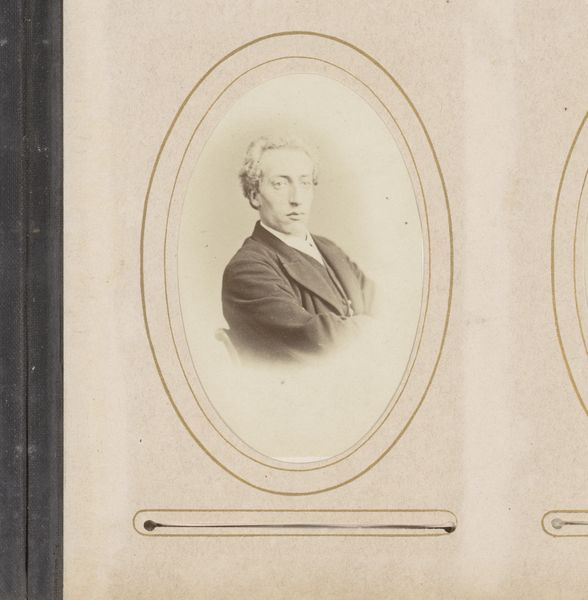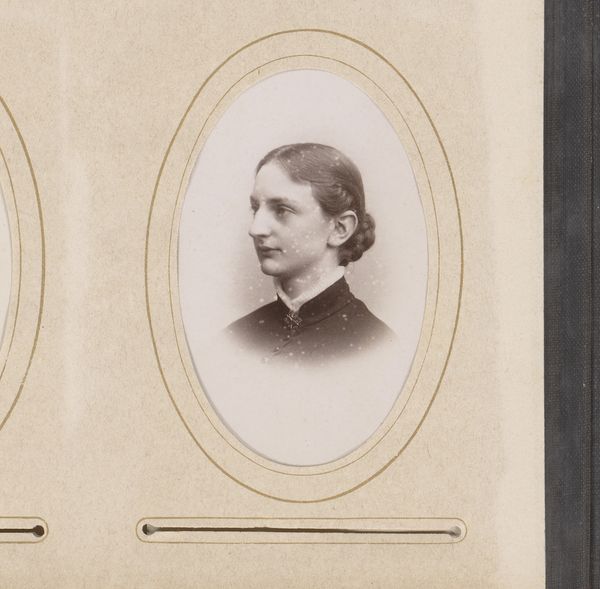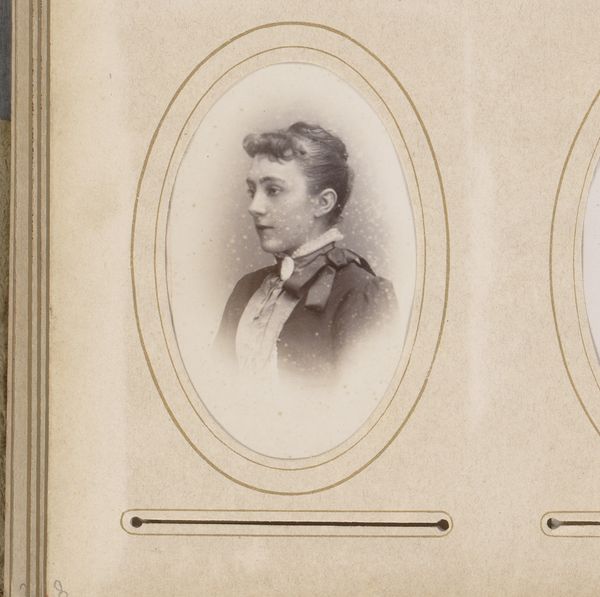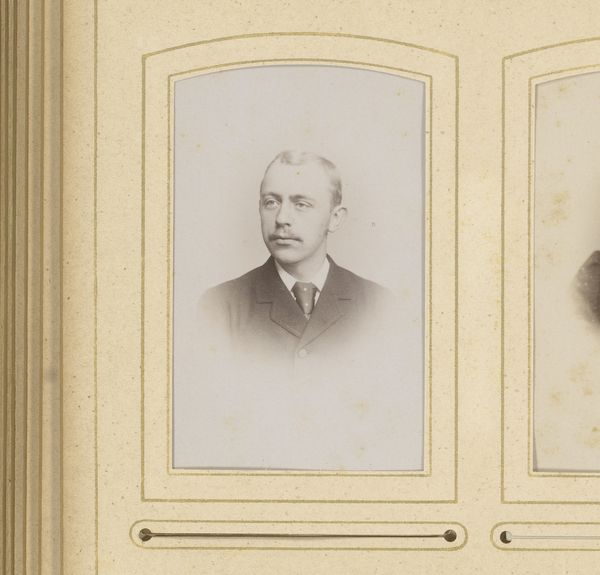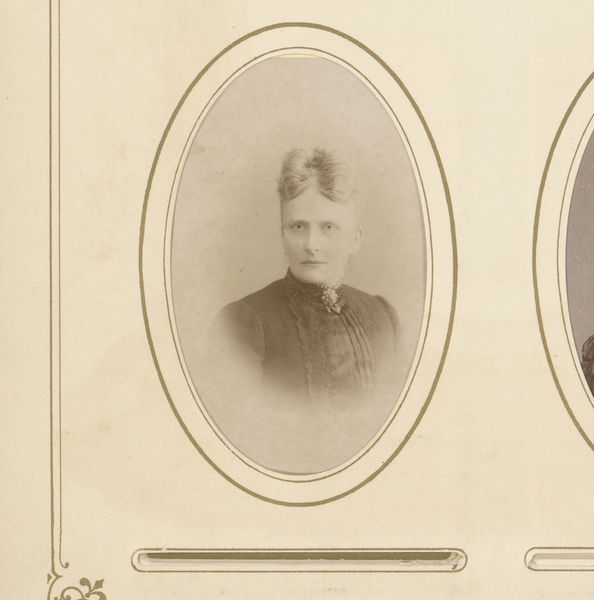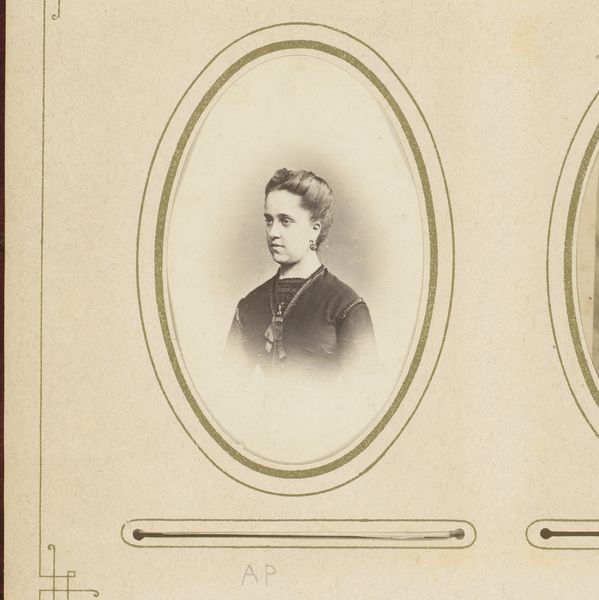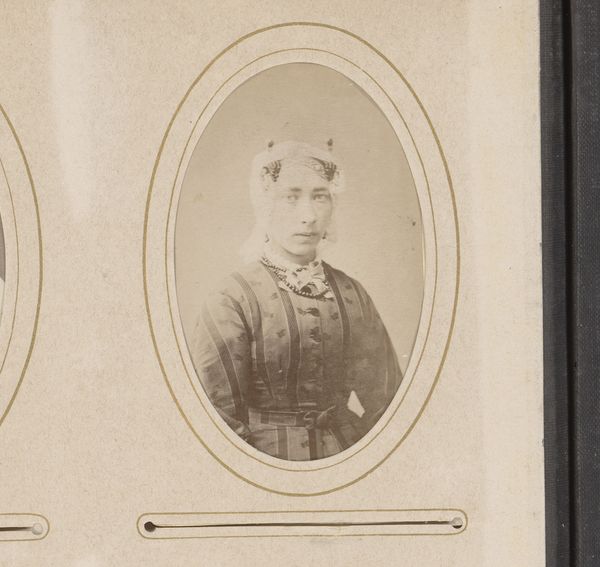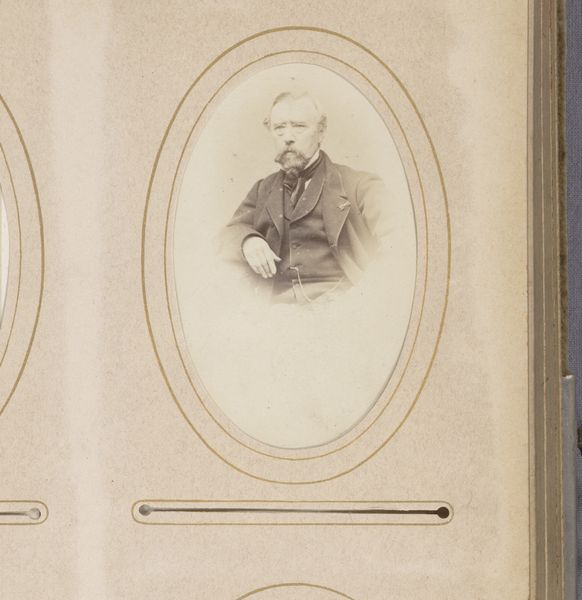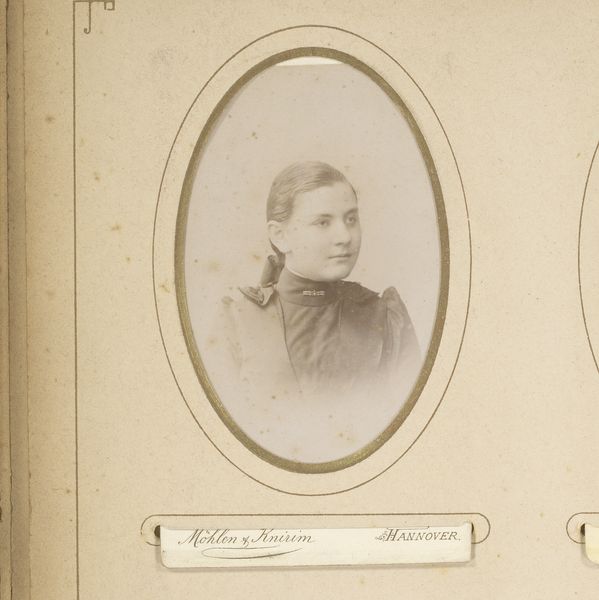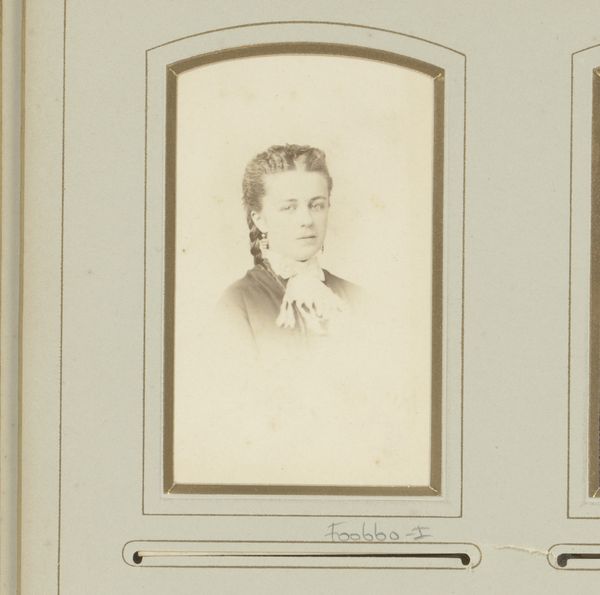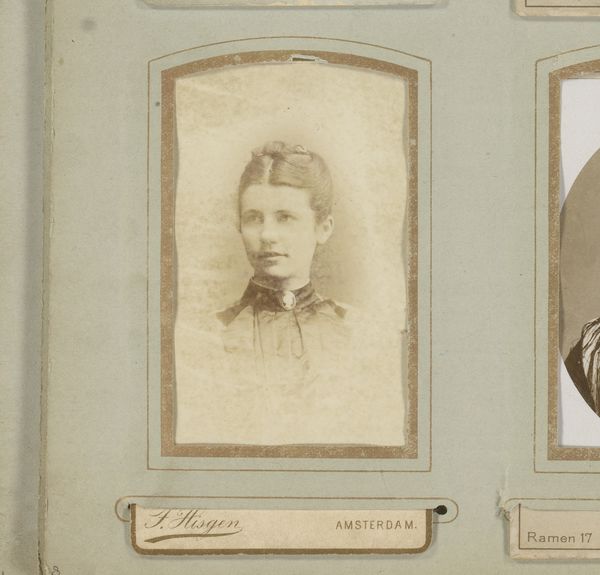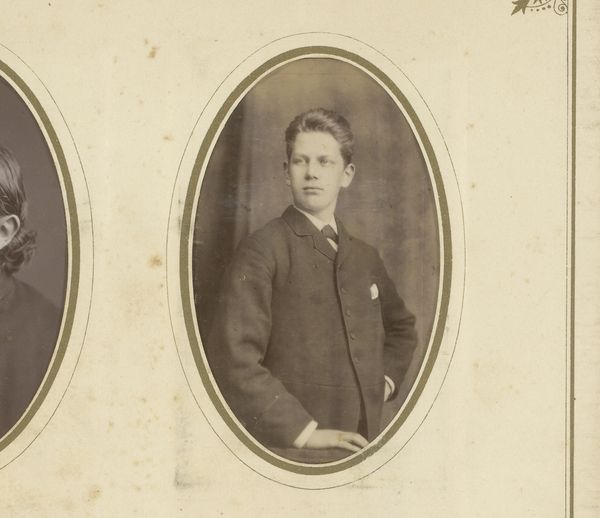
Dimensions: height 83 mm, width 50 mm
Copyright: Rijks Museum: Open Domain
Editor: This is "Portret van een jongeman," taken between 1861 and 1889 by Albert Greiner, currently held at the Rijksmuseum. It’s a very striking photograph, a very typical pose for that period. What are your thoughts about it? Curator: I find it fascinating to consider the social and economic factors at play here. Photography, while becoming more accessible, was still a deliberate process. We see the subject dressed formally, suggesting a certain status or occasion deemed worthy of capturing. Think about the labour involved: from the production of the photographic materials to the photographer’s skill in capturing and developing the image. Who was this young man, and what drove him to have this portrait made? Editor: That's a really interesting angle! I hadn't considered the broader industry behind even a simple portrait like this. Does the very materiality of the image itself--the aged paper, the faded tones--influence how we interpret it now? Curator: Absolutely. The material decay speaks volumes about the passage of time and the preservation of memory. Moreover, the "muted colour palette" and "toned paper", as identified in the tags, may reflect specific processes and chemical compositions typical of photography from that era, revealing technological choices. Can we extract insights regarding production and access from the materiality, potentially exposing connections to mass production or bespoke artisanal practices? Editor: That's a great point! I was just seeing it as an old picture, but you’ve made me consider it as an object deeply embedded in its time, from its materials to its purpose. Curator: Precisely! And the portrait is held by the Rijksmuseum today. This adds an additional later of significance: How does moving to the museum impact its meaning and our interaction with it? Editor: Thank you. It's given me so much to think about regarding this photograph. Curator: Indeed. Materiality reveals narratives of making, use, and meaning, turning this portrait into a testament of artistic skill, labour, and culture of the 19th century.
Comments
No comments
Be the first to comment and join the conversation on the ultimate creative platform.
